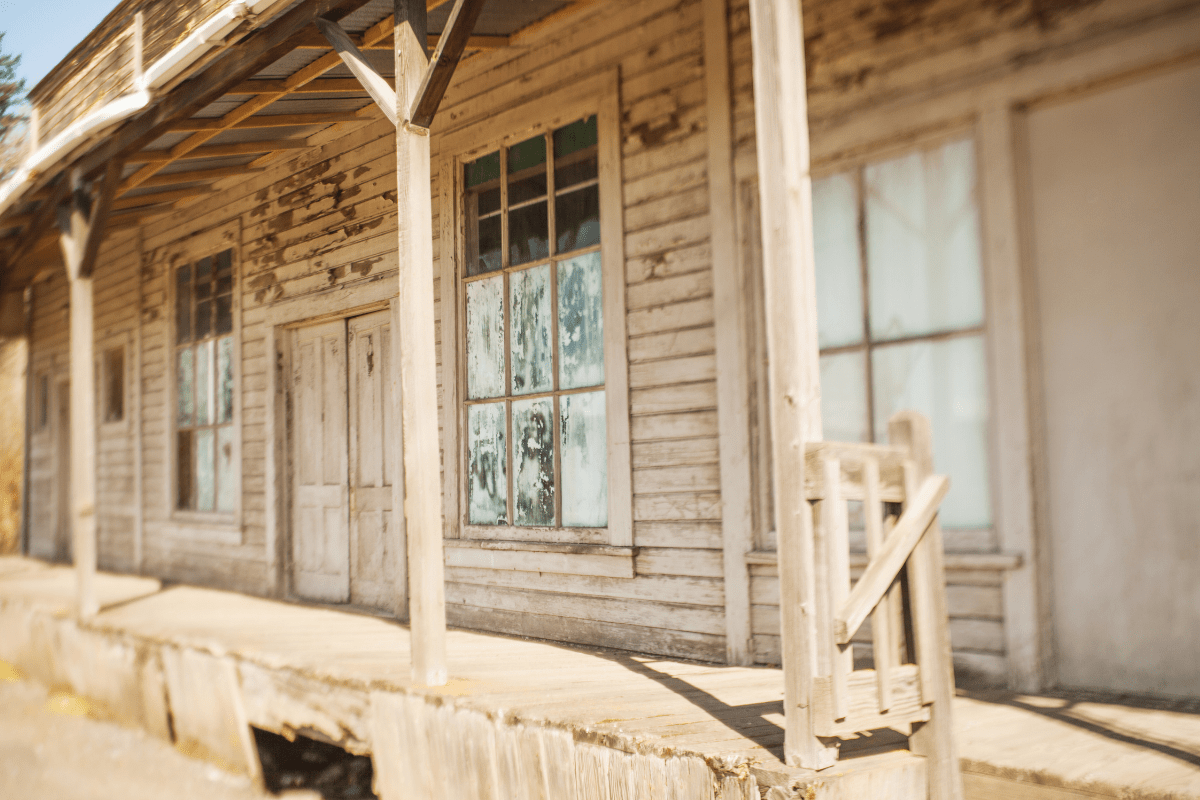When you picture the perfect place to raise kids, South Dakota might not immediately spring to mind… unless you're someone who values excellent schools, safe neighborhoods, and actually being able to afford a house before your children graduate college. This Midwest gem ranks 8th nationally for family life, and once you dig into the details, you'll understand why families are flocking to cities like Sioux Falls, Brandon, and Tea faster than kids racing to the ice cream truck.
The small towns stealing the show
Let's start with the communities that consistently top every "best for families" list, because honestly, these smaller cities are where South Dakota really shines for parents seeking that elusive work-life balance.
Brandon leads the pack
With a population of just 11,000, Brandon manages to snag the #1 spot for families in South Dakota year after year. Located 15 minutes from Sioux Falls along I-90, this town offers something increasingly rare: genuine community feel with metropolitan convenience.
The Brandon Valley School District deserves much of the credit. Their students achieve 62% math proficiency and 72% reading proficiency, numbers that would make most districts green with envy. Fred Assam Elementary consistently ranks among the state's top 10 schools, proving that smaller doesn't mean settling for less when it comes to education.
Safety statistics here read like a parent's dream journal. Crime rates run 84% lower than South Dakota averages. That means your biggest worry might be whether your teenager remembered to lock their bike, not whether it's safe to let them ride it.
The economics work too. Yes, the median home value of $353,481 might cause sticker shock, but consider this alongside the median household income of $104,806. With a cost of living index of 80.6 (nearly 20% below national average) and only 2.6% poverty rate, Brandon families aren't just surviving… they're thriving. The 80% homeownership rate tells you everything about long-term community stability.
Tea serves up rapid growth with small-town charm
If Brandon is the established favorite, Tea is the up-and-comer experiencing 29.9% growth from 2020-2024. With 6,300 residents, this #2 ranked community maintains its "everyone knows everyone" atmosphere despite the influx of new families.
The Tea Area School District serves 2,408 students and earned the #4 ranking statewide from Niche. What's particularly impressive is how the district has managed expansion without losing its community focus. New facilities are going up, but the small-town values remain firmly in place. Located just 15 minutes from Sioux Falls, Tea offers the best of both worlds for families who want space to breathe without feeling isolated.
Dell Rapids proves size doesn't determine success
With only 4,000 residents, Dell Rapids might seem too small for some families. But those willing to embrace genuine small-town life discover educational excellence that rivals much larger districts. Students here achieve 66% proficiency in both math and reading, with a cozy 15:1 student-teacher ratio ensuring no child gets lost in the crowd.
The median household income of $101,250 paired with just 3.6% poverty tells you this isn't a struggling rural community. It's a thriving small town where annual events like Quarry Days and Cootie Days (yes, that's really what it's called) bring everyone together. The historic Sioux Quartzite architecture gives the town character you won't find in cookie-cutter suburbs.
Where the big cities deliver for families
Not everyone wants small-town life, and South Dakota's larger cities offer plenty for families seeking more urban amenities without coastal prices or traffic.
Sioux Falls balances growth with livability
As South Dakota's largest city with 209,289 residents, Sioux Falls ranks #18 nationally among 182 cities for families. That might not sound spectacular until you realize it's competing against cities many times its size.
The job market here practically sparkles. With unemployment hovering between 1.5-1.9%, finding work isn't the challenge… choosing between opportunities is. Healthcare leads with 20,477 jobs, followed by retail (13,716) and manufacturing (11,615). The median household income of $74,714 supports comfortable living, especially with the cost of living index between 90.6-95.
Housing remains relatively affordable with median prices from $271,400-$335,000. Two-bedroom rentals average $1,090-$1,127, reasonable for a growing metro area. Local realtor Amy Stockberger notes that "areas with strong job growth and limited housing supply may continue seeing higher price appreciation," suggesting the market remains healthy rather than overheated.
Education presents a mixed bag across the district's 51 schools serving 25,123 students. While Lincoln High School ranks #1 statewide, overall district performance varies considerably. The presence of Augustana University and the University of Sioux Falls adds higher education options many similar-sized cities lack.
Crime trends show encouraging improvement. The 2024 violent crime rate of 5.65 per 1,000 residents marks the lowest since 2019. Property crime at 39.93 per 1,000 exceeds national averages but continues trending downward. Even vehicle thefts decreased for the first time since 2017.
Mayor Paul TenHaken's projection that building permits will reach the "$1 billion threshold" signals continued expansion. The Forward Sioux Falls initiative projects a $13.27 return on investment for private sector participants, indicating smart growth rather than sprawl.
Rapid City offers Black Hills adventure
With 79,404 residents, Rapid City provides something unique: metropolitan amenities with immediate access to the Black Hills, Mount Rushmore, and Badlands National Park. For outdoorsy families, 109 miles of trails through national forest might seal the deal.
The economics look solid with 1.6% unemployment ranking 2nd lowest nationally. While the median household income of $65,712-$66,319 falls below Sioux Falls, it aligns with the slightly lower cost of living. Housing prices mirror Sioux Falls at $274,200-$357,000, with a cost of living index between 93.7-98.
Ellsworth Air Force Base adds economic stability with a $1.5 billion expansion underway for the B-21 bomber program. This will bring 4,000 additional personnel and families, boosting local schools, businesses, and housing demand.
However, Rapid City faces significant safety challenges. The overall crime rate of 47 per 1,000 residents ranks among America's highest, with property crime giving residents a 1 in 25 chance of victimization. School performance also raises concerns, with several schools in the 30-school district receiving below-average ratings.
College towns combining brains and safety
South Dakota's university communities offer unique advantages for families valuing education and culture.
Brookings leverages university energy
Home to South Dakota State University, Brookings (population 24,312) transforms into a bustling college town of 35,000+ when classes are in session. This academic presence helped earn Brookings the #2 safest city ranking statewide for 2025, with a crime rate of just 1.28%.
The Brookings School District serves 3,446 students with a favorable 17:1 student-teacher ratio. Test scores of 36% math proficiency and 51% reading proficiency suggest room for improvement, though the university atmosphere creates educational opportunities beyond classroom walls.
Housing challenges exist with median prices between $284,316-$363,466. However, the Branch Creek development now offers homes below first-time buyer limits. The cost of living index at 84.3 keeps daily expenses 15% below national average, while the average 13.2-minute commute leaves more family time.
Healthcare shines with Brookings Health System earning Top 20 Rural Community Hospital recognition and making Newsweek's World's Best Hospitals 2025 list. The Children's Museum of South Dakota provides educational entertainment rarely found in cities this size.
Aberdeen prioritizes affordability
If your budget matters more than amenities, Aberdeen (population 27,895) delivers the most bang for your buck among mid-sized cities. The cost of living index of 78.9 means expenses run 21% below national average.
Housing costs make homeownership achievable for most families:
- Median home price: $204,000-$218,378
- One-bedroom rent: $733-$899
- Significantly below state averages
Northern State University anchors the economy alongside government, healthcare, and agriculture sectors. Families enjoy unique attractions like Storybook Land theme park, which draws regional visitors, plus the Aberdeen Aquatic Center and Wylie Park.
One caveat: Aberdeen ranks among three most violent cities in South Dakota according to SafeHome.org. However, crime rates remain relatively safe by national standards, and many families find the affordability trade-off worthwhile.
Watertown excels at education
For families prioritizing academic achievement above all else, Watertown (population 23,597) delivers results that speak volumes. Students achieve 69% reading proficiency, well above state averages, with an 88-90% graduation rate.
Watertown High School's 1,222 students benefit from:
- 17:1 student-teacher ratio
- Average SAT score: 1200
- Average ACT score: 25
- Consistent outperformance of state norms
Located between Pelican Lake and Lake Kampeska, Watertown offers exceptional water recreation. The nationally recognized Redlin Art Center and Bramble Park Zoo provide cultural enrichment, while Lake Area Technical College strengthens workforce development. Housing averages $214,060-$240,451 with a cost of living index of 91, making excellence affordable.
Understanding South Dakota's unique advantages
Beyond individual cities, statewide factors make South Dakota particularly attractive for families watching their budgets.
Tax structure that actually helps families
South Dakota's tax approach reads like a fiscal fairy tale:
- No state income tax
- No corporate income tax
- No inheritance tax
- 2nd nationally on Tax Foundation's Business Tax Index
- Property tax average: 1.14% effective rate
This isn't about avoiding civic responsibility… it's about keeping more money for your family's needs while still funding excellent schools and services through other revenue sources.
Real costs of family life
Let's talk actual numbers families care about:
- Childcare: $6,349-$6,511 annually
- Median monthly utilities: $408
- Overall housing: 6% below national average
- Groceries and gas: typically below national averages
These aren't just statistics… they're the difference between living paycheck to paycheck and actually saving for college or family vacations.
Education innovation beyond test scores
One-third of South Dakota districts have implemented phone-free policies, with impressive results. Gettysburg Superintendent Amber Mikkelsen reports that "student engagement increased" after phone restrictions. This practical approach to modern challenges shows South Dakota schools adapting to help students succeed.
Regional differences matter
The Missouri River divides South Dakota into two distinct regions, each offering different lifestyle options.
East River communities (containing 70% of the population) feature:
- Agricultural economy
- Scandinavian-German heritage
- Culture similar to Minnesota/Iowa
- Cities: Sioux Falls, Brookings, Aberdeen, Watertown
West River areas offer:
- Ranching economy
- More ethnic diversity
- Western mountain culture
- Superior outdoor recreation
- Higher living costs
Recent infrastructure improvements, including $203.5 million in broadband expansion since 2019, make rural areas increasingly viable for remote work families.
Making your South Dakota decision
Choosing where to plant family roots requires balancing multiple priorities. Here's how different cities stack up:
For Academic Excellence:
- Watertown (69% reading proficiency)
- Dell Rapids (66% balanced proficiency)
- Brandon (superior overall performance)
For Maximum Safety:
- Brandon (crime 84% below state average)
- Brookings (1.28% crime rate)
- Tea (small-town security)
For Affordability Champions:
- Aberdeen ($204,000 median homes)
- Dell Rapids (low cost, high income)
- Brookings (university town value)
For Career Opportunities:
- Sioux Falls (diverse economy, lowest unemployment)
- Rapid City (military expansion jobs)
- Brookings (university employment)
For Outdoor Enthusiasts:
- Spearfish (Black Hills playground)
- Rapid City (national parks access)
- Watertown (lakes lifestyle)
The bottom line for families
South Dakota's 8th-place national ranking for families reflects more than just statistics. It represents communities where neighbors still watch out for each other's kids, where teachers know students by name, and where a middle-class income actually provides a middle-class lifestyle.
Whether you choose Sioux Falls' urban energy, Brandon's top-ranked schools, Tea's growth potential, or Aberdeen's unbeatable affordability, you're selecting more than just a zip code. You're choosing a place where the American dream of homeownership, quality education, and community connection remains achievable.
The state's unique combination of no income tax, low unemployment averaging 1.8% in 2024, and genuine community values creates an environment where families don't just get by… they flourish. From the REALTOR® Association reporting balanced growth with pending sales up 18.4% but prices rising just 1.6%, to school districts innovating with phone-free policies, South Dakota communities are adapting intelligently to modern challenges.
Sure, winters get cold and you might miss big-city amenities like multiple Thai restaurants or regular Broadway shows. But when your kids can safely bike to school, your mortgage doesn't require two incomes, and your neighbors become lifelong friends, those trade-offs start looking pretty smart. South Dakota proves that raising a family well doesn't require choosing between financial security and quality of life… here, you can actually have both.





